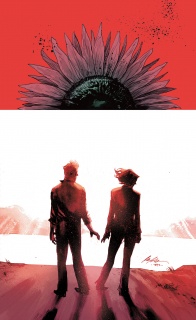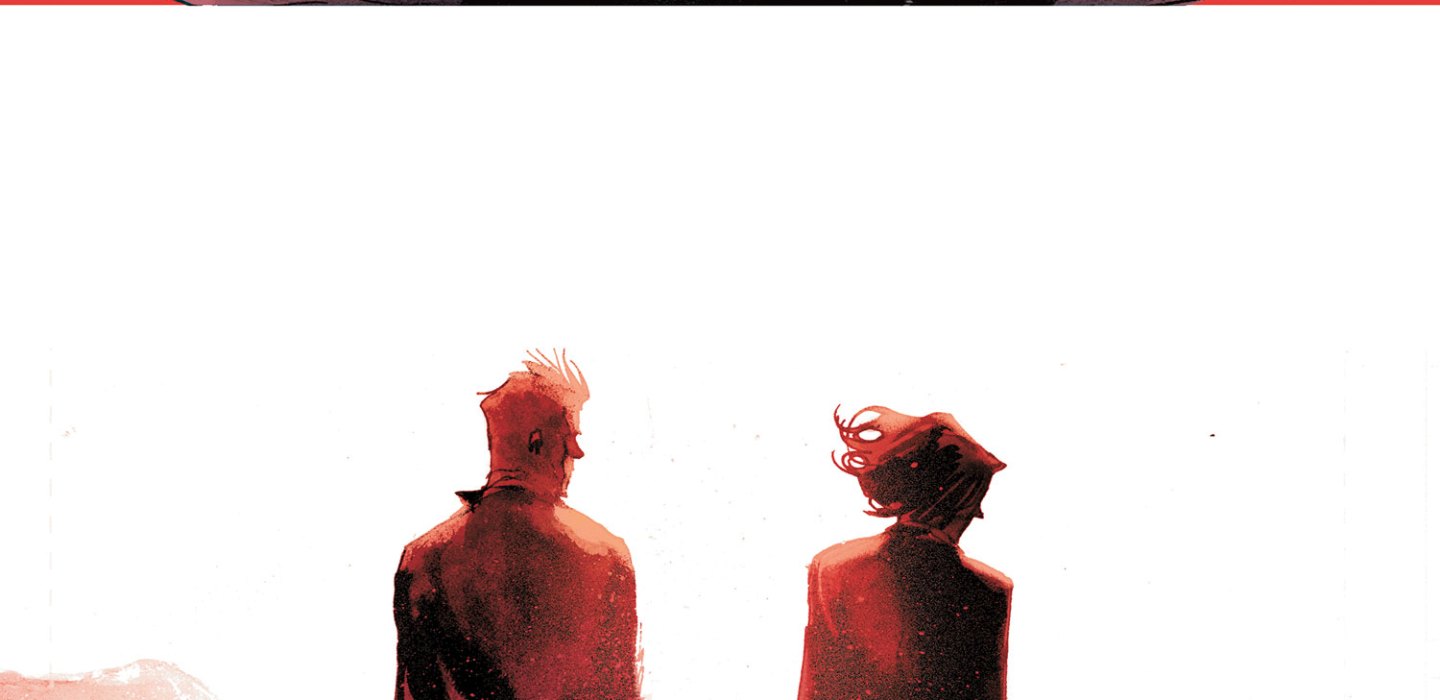“American Vampire” co-creator Scott Snyder has been very busy as DC’s newest golden boy, and the team has wisely decided to put the book on hold for the moment. This week marks the final issue for the time being — but does it go out with a… fang?
I know, I said I’d stop with the terrible, meaningless puns but I can’t stop it.

Written by Scott Snyder
Illustrated by Rafael Albuquerque“The Blacklist” is over. Lives have been shattered, alliances destroyed. Skinner and Pearl have made it halfway through the twentieth century and AMERICAN VAMPIRE hits a major turning point in the series.
Interestingly enough, for the pre-hiatus issue, this “American Vampire” installment avoids using any of the primary cast, outside of voice-less flashbacks, and the effect of this choice on the issue’s installment as the first one before the break is profound. After the devastating conclusion to ‘The Blacklist,’ fans are clamoring to see how Pearl and Skinner have developed since tragedy struck, and rather than give in and offer an issue that could read more like a finale to a canceled-to-soon series, Snyder gives us characters that we are barely familiar with and builds up excitement for what is to come… eventually. This isn’t exactly something that we have seen from Snyder before; he has certainly teased at things to come, but this is the first comic of his that reads as prophecy, and, for the most part, he pulls it off with an expert’s finesse. Like writers who use this approach more commonly, such as Grant Morrison or, lately, Jonathan Hickman, Snyder knows how to structure his issue so it doesn’t read pedantically — this comic, despite being a bunch of talking, rises and falls, keeping the reader invested not only because they are interested in the fate of Pearl and Skinner, but because it is a captivating read. The cherry on the top is that Snyder is able to do this without losing his voice. Sure, it’s a change of form for “American Vampire,” but it is still the same book that we fell in love with 31 issues ago.
(Very minor spoilers in the following paragraph)
That all being said, an emphatic “shame on you” to Snyder for his sloppy introduction of a new race of horrors solely for the purpose of creating a hurried plot device. It’s not so much that we can only have vampires in “American Vampire” — rather, the main problem with the creature that appears in merely a single panel of this issue is that it only exists, in the sense of this issue, to make one of the secondary scenes and the climactic page of this issue possible. Perhaps, on the one hand, these creatures will become relevant in the later half of the ongoing. Or, more likely, we are meant to assume that all sorts of terrifying beings dwell in the world of “American Vampire.” With no previous introduction to creatures other than vampires, though, the beast shown seems like a lazy attempt to seem… not lazy. To be honest, it would be more acceptable for Snyder to just present us with a character who sees what the spotlight character of this issue without giving any explanation. Even if we later found out that her story was still the same, Snyder probably could have made it seem more relevant, and less like unnecessary justification. As is, though, the scene in question — and even more so the later bit of dialogue that explains its significance — earns a painful eye-roll.
While Snyder spins an intriguing yarn, the true star of this issue is artist Rafael Albuquerque. “American Vampire” has always been, unquestionably, a horror comic, but the main body, not including the flash-backs and flash-forwards, is not overtly written as a horror comic. Switch artists around, and certain bits could even pass for crime noir. Albuquerque has long been this comic’s secret weapon, able to add incredible amounts of tension to any scene, no matter how mundane. This issue is a great example: for an issue that is, to put it bluntly, primarily composed of people talking, Albuquerque’s choices of expression and, in particular, framing cause the reader’s anticipation to compound page by page. The two interrupting scenes serve different artistic purposes; the first offers some form of relief from the horror Albuquerque has built up in a moment of pure action, as smoothly illustrated as ever, while the second serves as a false climax for the impending sense of finality the comics’ atmosphere generates. These pages allow us a release from the horrific hold the issue has hitherto established — a necessary choice, as the “true” climax is something different. This climactic page is actually a two-page spread incredible quality, revealing Albuquerque’s keen eye for composition, and is perhaps the most visually striking page of the book so far. Snyder is the hot commodity at DC these days, but issues like this remind the reader that this book would be worth picking up for Albuquerque’s art alone.
For the most part, this issue does exactly what is intended: it gets long-time readers excited for what’s to come, then leaves them hanging (in a good way). This issue represents a big shift for Snyder in terms of writing style, and even if he makes a slightly distracting mistake, he still manages to pull it off well. All this, while Albuquerque continues to dominate the page. Goodbye for now, “American Vampire” — you will be missed.
Final Verdict: 8.0 – Buy it!



